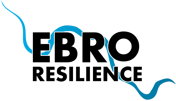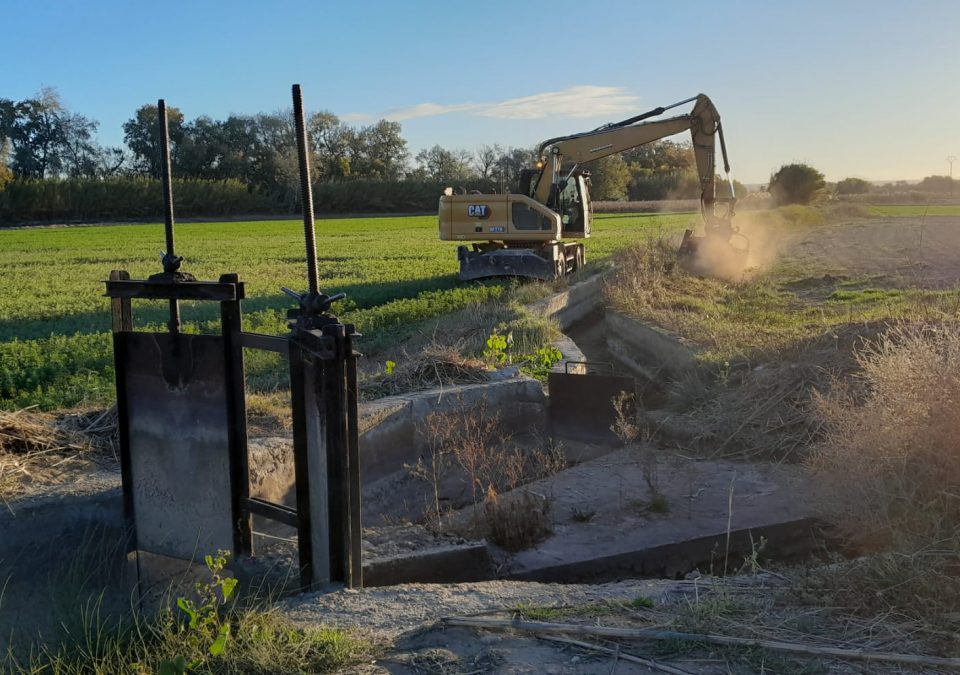Significant progress in the LIFE Ebro Resilience P1 project to mitigate flood risk. This week the works foreseen for zone 2 of the project, the Fuentes de Ebro-Osera de Ebro section, in Zaragoza, have started. The first intervention in this area involves the adaptation of the irrigation system of the Huerta del Ebro Irrigation Community in the Aguilar meander, reducing its exposure to flooding.
This action is being carried out by the Department of Agriculture, Livestock and Food of the Government of Aragon through the public company TRAGSA, with a budget of 1,156,749.93 euros.
The purpose of the works is to move the existing irrigation network away from the defense dike. In its current position, there were affectations and cuts in the supply when there were breaks in the mote. In addition, there will be a change from an existing infrastructure built by means of an open-cut trench in the ground to a buried concrete pipeline. Thus, together with a greater adaptation to the flooding of the Ebro River, by preventing the irrigation ditch from being an obstacle to water flow, it also increases the efficiency of the irrigation system, reducing losses and maintenance work.
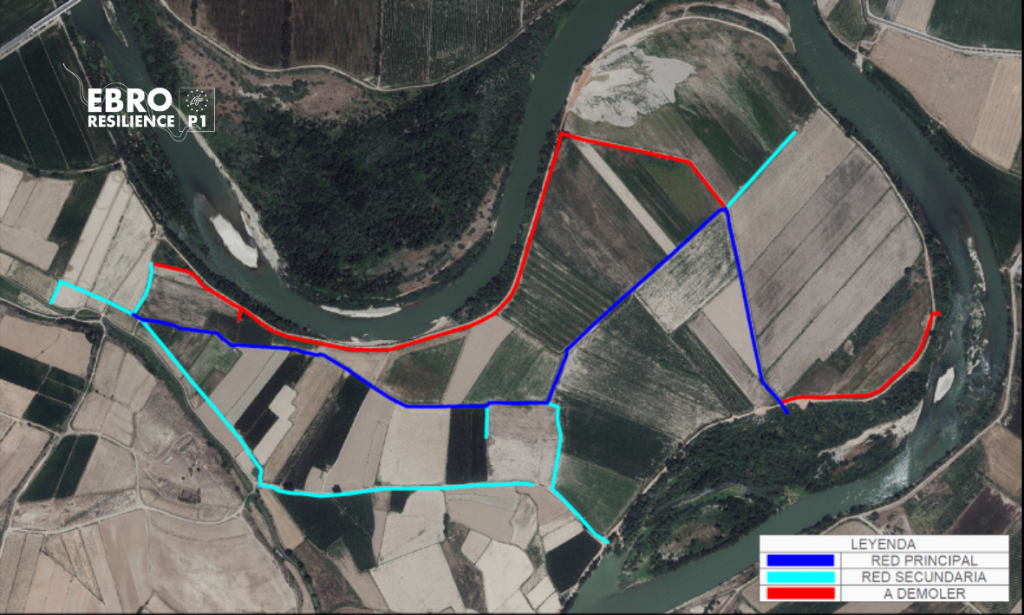
Participation and rest of the project
One of the keys to this intervention is the involvement of the users of the system. The design of the new route and the definition of the new network has been carried out with the collaboration of the Irrigation Community of the Huerta del Ebro, whose members have been integrated in the stable participation groups of the LIFE Project.
In the meetings of these groups, LIFE Project technicians and interested parties work together on the design of the interventions, the resolution of problems that may arise, and also gather contributions and suggestions for the improvement of the actions.
In addition to the work already started, further interventions are planned to reduce the damage due to flooding. In the first phase, the narrowing will be reduced and river space will be recovered by recessing two sections of the defense dike, moving them away from the channel in the meander of Aguilar and the mejana del Conde. This project has already passed the public information phase and will be executed by another of the partners, the Ebro Hydrographic Confederation (CHE) with a budget of 2.9 million euros.
The expansion of the river area will be completed with the environmental restoration of the land recovered for the riverbed, through the planting of riparian vegetation, which will be carried out by the Government of Aragon.
In the second phase, currently at an advanced drafting stage, one of the most innovative interventions of the LIFE proposal is proposed: the creation of the so called
buffer zones for lateral flows.
These buffer zones will compartmentalize farms in areas that will be pre-flooded in a controlled manner during flood episodes, generating water buffers that will minimize damage to farms and infrastructure when there is a generalized overflow. Here we have taken into account the processes already underway to modernize irrigation of the entire orchard, by the Irrigation Community of the Huerta del Ebro, and the action that goes with it of land consolidation, by the Government of Aragon.
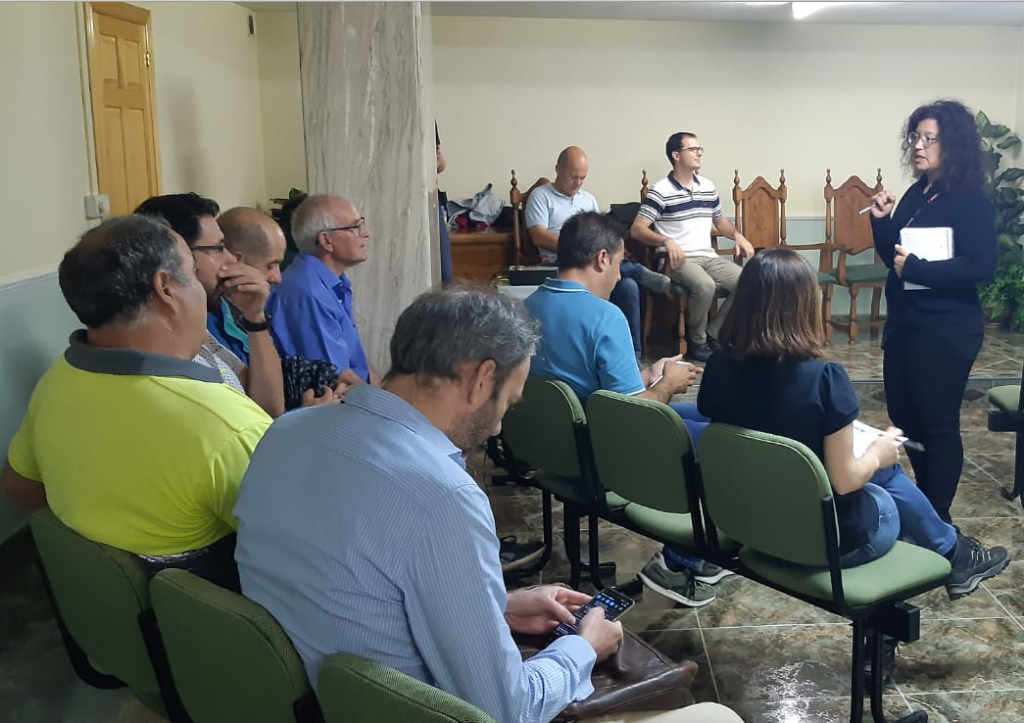
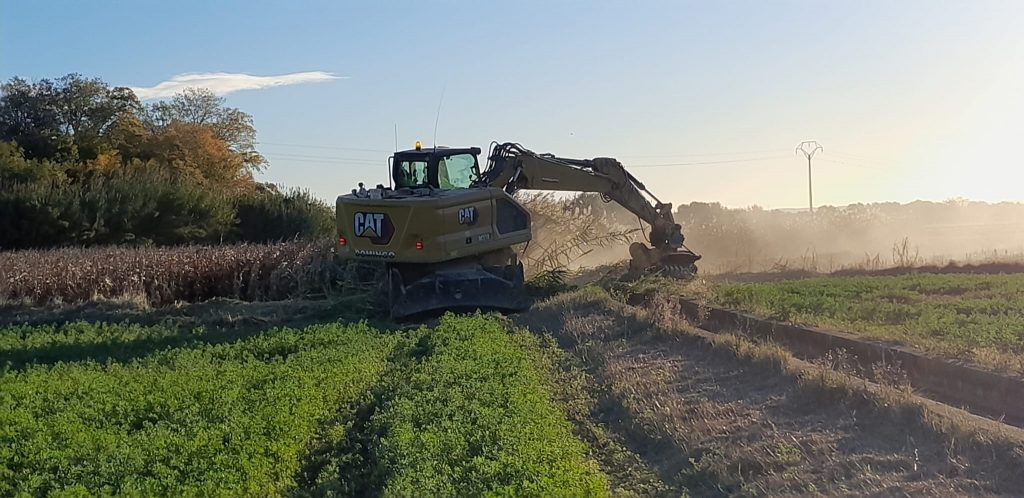
The LIFE Ebro Resilience P1 project (LIFE20 ENV/ES/00327), approved by the European Commission in the LIFE2020 call, will be carried out in three autonomous communities (La Rioja, Navarra and Aragón), with a duration of 6 years and a total budget of 13,310,350 €, with 55% of European funding.
This project is also an example of institutional coordination and cooperation in the intervention section, its partners being the Ministry for Ecological Transition and Demographic Challenge (MITECO), through its companies TRAGSA and TRAGSATEC; the Ebro Hydrographic Confederation; the Government of La Rioja; the Government of Navarra, through Gestión Ambiental de Navarra, S.A. (GAN-NIK); the Government of Aragón and the Aragonese Water Institute.
